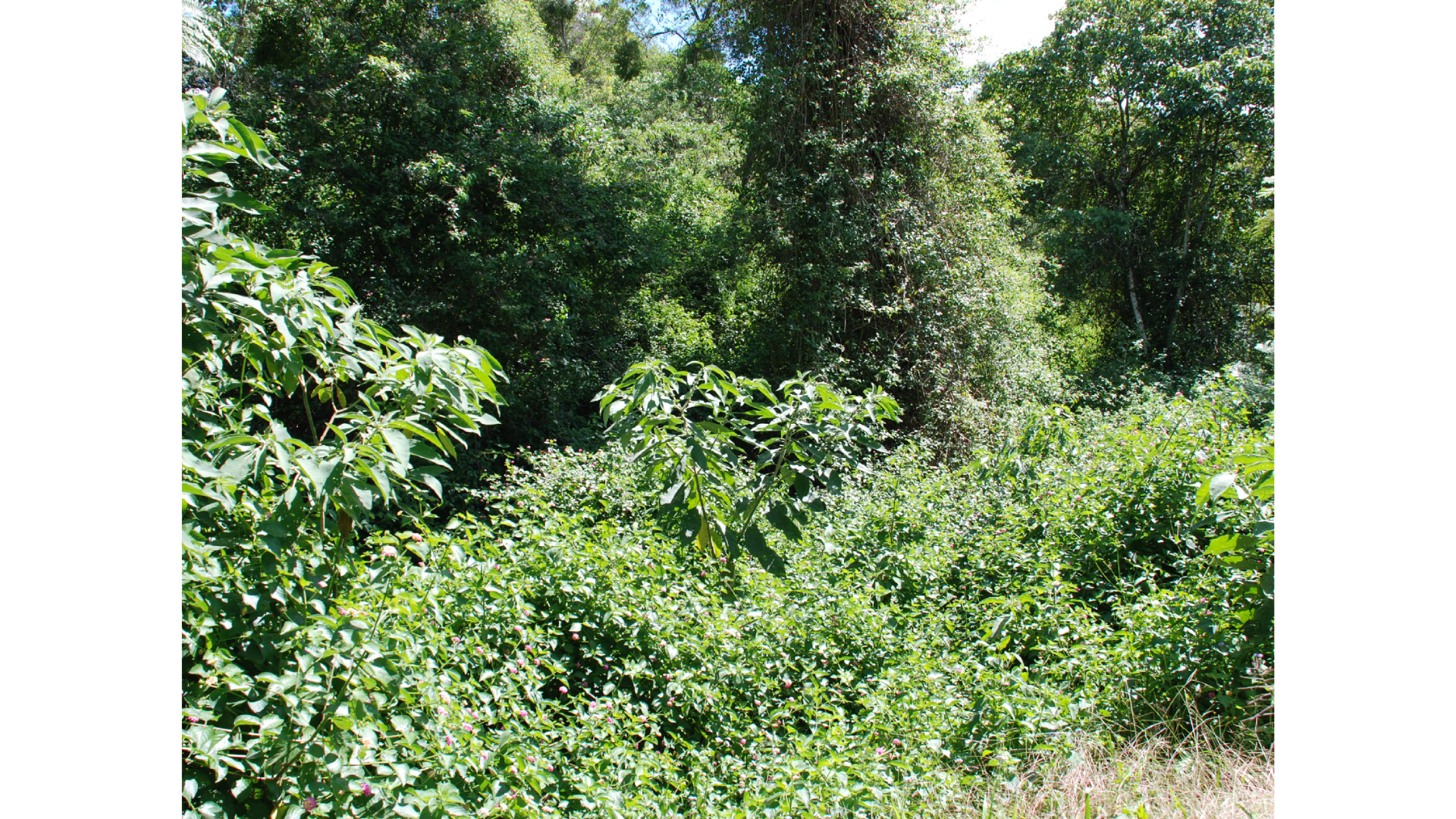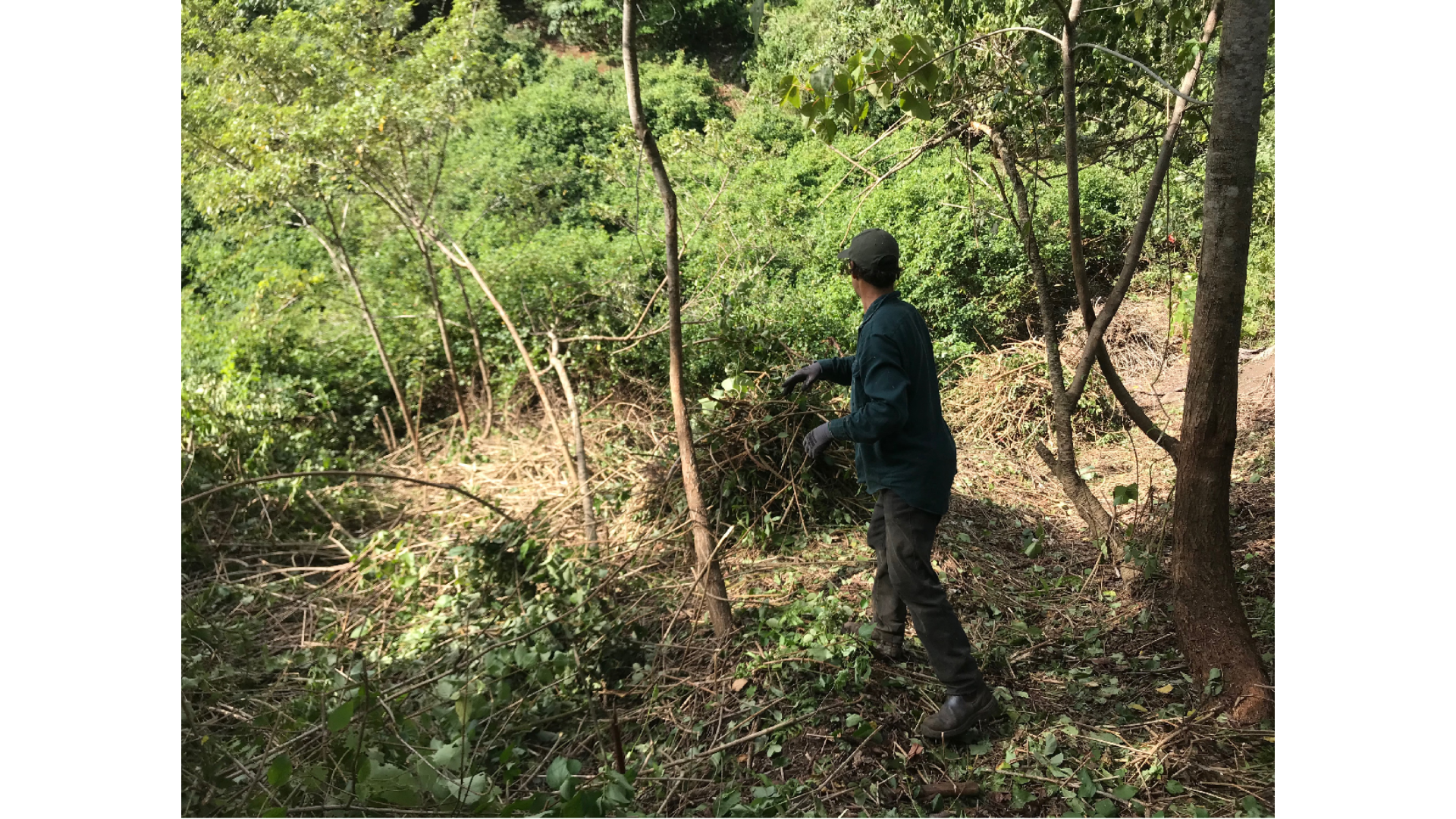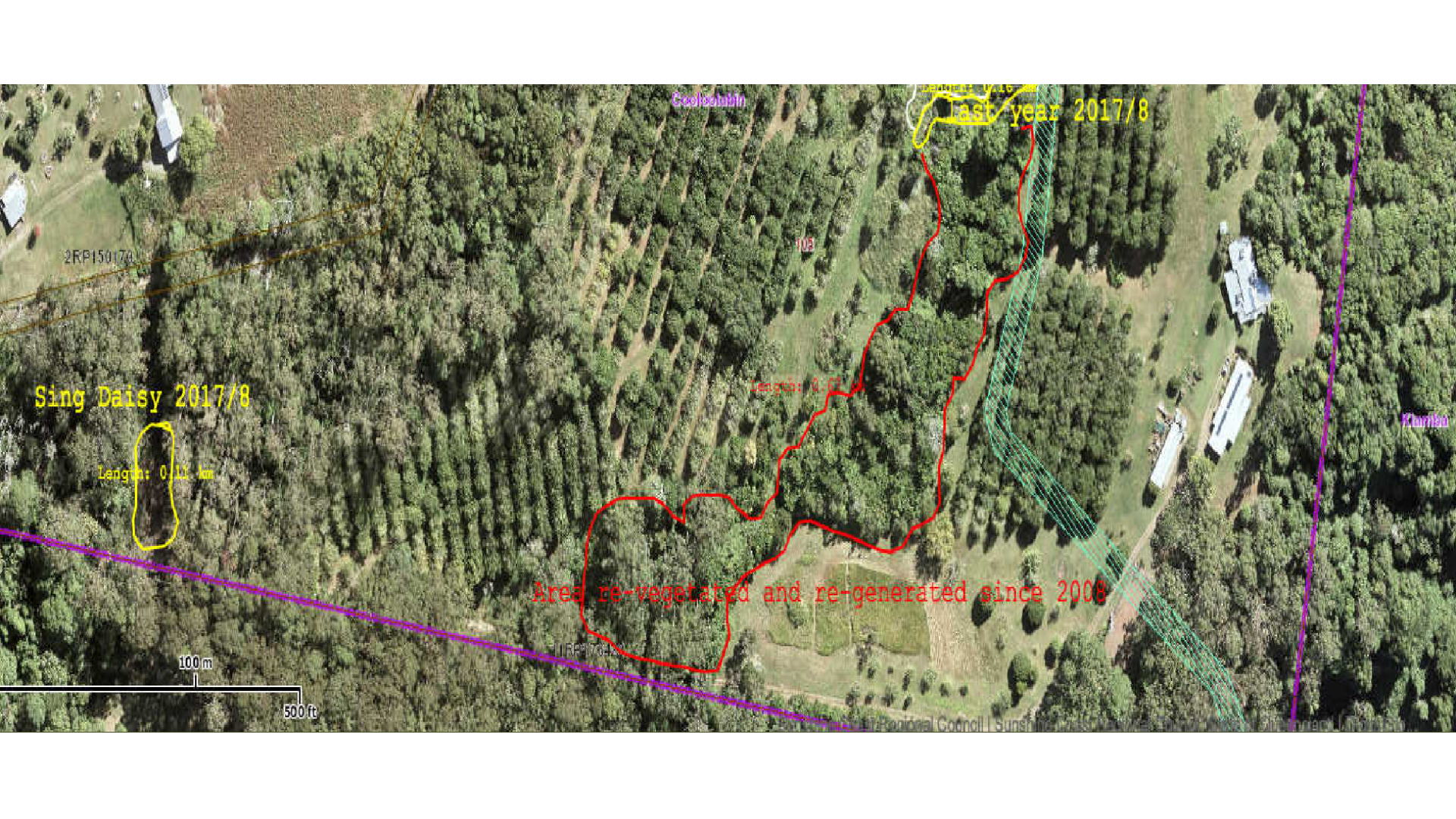Nestled in the heart of Cooloolabin, just 20 minutes west of Yandina, lies a remarkable 17-hectare property that is quietly making a big impact.
Once nearly stripped bare in the early 1900s for logging and citrus farming, this land now plays a vital role connecting the landscape for our local wildlife.
Since 2007, landholder Julia has been on a passionate mission to restore the gully line that runs through the centre of her property - an area that forms part of vital habitat area stretching to the Blackall Ranges.
What was once a dense thicket of invasive weeds like lantana, tobacco bush and camphor laurel has been transformed into a thriving ecosystem.

Before restoration
Today, 1.5 hectares of gully line vegetation have been restored, creating a flourishing wildlife corridor from the Mapleton National Park that stabilises banks, controls erosion and nurtures biodiversity in the headwaters of the South Maroochy River.
This transformation has been made possible through the support of Sunshine Coast Council's Landholder Environment Grants program, funded by the Environment Levy.

During restoration
Julia's success lies in her strategic, staged approach - starting at the top of the gully and working downwards, tackling one section at a time with some help from experienced bushland restoration contractors and the landholder environment grants.
Each grant has doubled her efforts, allowing her to expand the restoration footprint year by year.

Before restoration aerial view
The results speak for themselves
The restored habitat now attracts a range of native wildlife, including rare species such as the noisy pitta, tusked frog and regent bowerbird.
These sightings are a testament to the ecological value of Julia's work and the importance of community-driven conservation.
Julia's journey is a powerful reminder that with vision, persistence and the right support, even the most degraded landscapes can be restored.

After restoration
Apply for Landholder Environment Grants now
From July 7, the Environment Levy funded grants will open for expressions of interest for the 2025 funding round.
Rural landowners can apply for financial help to complete on-ground environment projects on their private property.
Grants of up to $15,000 are available for projects, including bush regeneration, reducing sediment loss on farms, excluding stock from waterways, controlling environmental weeds, modifying non-boundary fencing to make it wildlife-friendly, revegetating degraded areas and establishing vegetation corridors and buffer zones.
Sunshine Coast Division 10 Councillor David Law said the grants were funded by the Environment Levy and delivered on Council's Environment and Liveability Strategy objectives.
"Year on year, the Landholder Environment Grants continue to support rural property owners restore their properties and Council is very proud to be a partner in their success," Cr Law said.
Applicants should submit EOIs
Environment and Liveability Portfolio Councillor Maria Suarez encouraged rural landholders to check the guidelines on Council's website to see if their project was eligible.
"The grants are a competitive process and priority will be given to projects with high ecological value and those which have good landowner co-contribution," Cr Suarez said.
"Last year 86 recipients shared in $325,000 under the Landholder Environment Grants program.
"These grants help rural property owners enhance their beautiful slice of the Sunshine Coast, which benefits the biodiversity of our whole region."
Only private rural landholders can apply, and the project must occur on privately owned rural land within the Sunshine Coast Local Government area.
Applying is a three-stage process:
1. Expressions of Interest open July 7, 2025. Submit an Expression of Interest before August 11, 2025.
2. Site visit from a Sunshine Coast Council Conservation Partnerships Officer to assess the project and provide any additional guidance.
3. Apply online before September 29, 2025.
The total grant funding pool available is $325,000.
Please read the Landholder Environment Grant Guidelines to find out more.






